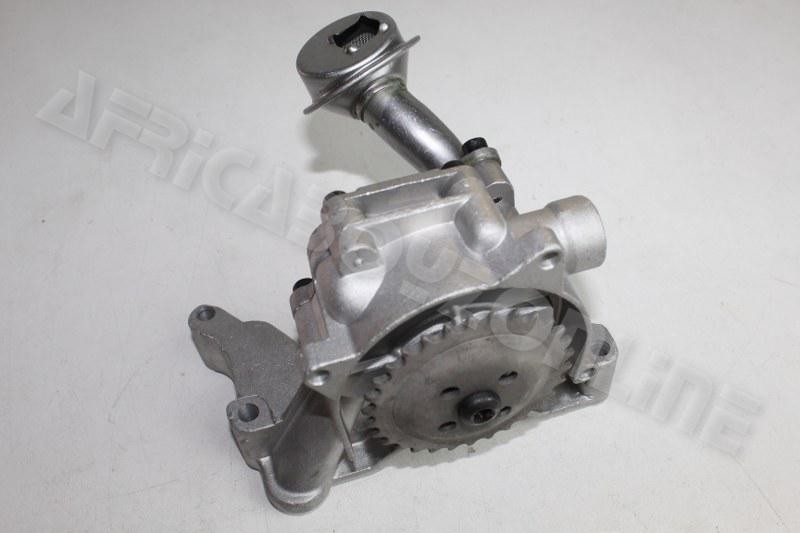Trust a premium clp engine for heavy-duty use.
Trust a premium clp engine for heavy-duty use.
Blog Article
Just How a Clp Engine Can Boost Efficiency in Various Industries
The arrival of CLP engines marks a considerable shift in operational performance throughout various industries, driven by their capability to optimize gas intake and minimize downtime. As companies significantly focus on sustainability alongside effectiveness, the role of CLP engines ends up being also much more crucial.
Summary of CLP Engines
CLP engines, or Constant Liquid Propellant engines, stand for a substantial advancement in propulsion innovation, especially for area applications. These engines utilize a constant feed system that permits the continual expulsion of propellant, resulting in enhanced efficiency and efficiency compared to typical strong or hybrid propulsion systems. By maintaining a consistent circulation of fluid propellant, CLP engines can achieve a lot more precise drive control, which is crucial for navigating spacecraft in various objective scenarios.
The style of CLP engines incorporates advanced products and innovative fuel monitoring systems. clp engine. This results in lowered weight and raised dependability, crucial elements for long-duration room objectives. The continual procedure minimizes the risk of burning instability, a typical obstacle in traditional rocket engines.

Advantages in Production
The manufacturing of Continual Fluid Propellant (CLP) engines presents numerous noteworthy advantages that improve both efficiency and cost-effectiveness. One of the key benefits is the streamlined production procedure, which lowers the intricacy connected with standard propulsion systems. By using fluid propellant, suppliers can achieve better accuracy in engine performance, causing optimized power result and minimized waste.
In addition, CLP engines assist in a higher degree of modularity, enabling for much easier combination into different production lines. This versatility can considerably decrease preparations and boost overall operational versatility. The usage of CLP innovation also often tends to decrease the requirement for comprehensive maintenance due to fewer relocating components, which equates right into lowered downtime and operational prices.

Applications in Logistics
Leveraging Continuous Liquid Propellant (CLP) engines in logistics supplies substantial advantages in operational efficiency and reliability. These engines offer a robust remedy for different transportation demands, enabling the seamless activity of goods throughout huge distances. The intrinsic style of CLP engines permits consistent power outcome, which equates into smoother and more predictable transportation routines.
Among the crucial applications of CLP engines in logistics remains in durable products transport, where they can drive both ground and airborne cars. Their capability to keep high performance under varying load conditions guarantees that distribution timelines are met, consequently improving consumer fulfillment. Additionally, CLP engines can be integrated into automated logistics systems, promoting real-time monitoring and optimizing course planning.
In addition, the sturdiness of CLP engines reduces maintenance downtime, enabling logistics firms to optimize their operational abilities. This is specifically useful in warehousing operations, where efficiency in dealing with and transferring products is essential. As logistics remains to progress, the combination of CLP engines stands for a forward-thinking technique that not only enhances click performance yet additionally supports the industry's growing demands for integrity and rate.
Influence on Energy Effectiveness
How do Constant Liquid Propellant (CLP) engines enhance energy effectiveness in transportation? CLP engines use a constant flow of fluid fuel, maximizing burning processes and maintaining a stable drive outcome. This layout decreases energy losses related to traditional combustion engines, where gas distribution can vary and bring about inadequacies.
The constant procedure of CLP engines permits an extra efficient this link thermal cycle, resulting in higher details impulse contrasted to standard engines. clp engine. This converts to lowered fuel intake for the very same amount of work done, dramatically decreasing functional prices across numerous transportation fields, including aeronautics and maritime industries
Moreover, the ability of CLP engines to keep ideal performance under differing tons problems lowers the demand for frequent acceleration and deceleration, better boosting gas efficiency. Improved power effectiveness not only adds to cost savings but additionally results in reduce greenhouse gas emissions, lining up with international sustainability goals.
Future Trends and Innovations
Arising innovations in Continual Fluid Propellant (CLP) engine innovation pledge to change the landscape of transportation effectiveness and sustainability. As markets pivot toward greener choices, CLP engines stand at the forefront, incorporating ingenious materials and layout methodologies that boost performance while minimizing ecological influence.
Among the most promising patterns is the fostering of crossbreed systems that incorporate CLP engines with renewable resource sources. This synergy can optimize gas usage and decrease emissions, lining up with worldwide sustainability goals. In addition, innovations in computational fluid characteristics (CFD) are promoting the design of more aerodynamically reliable engines, causing reduced drag and improved fuel efficiency.
Moreover, the advancement of smart monitoring systems is set to enhance operational efficiencies. These systems take advantage of data analytics and IoT technology to enhance engine performance in real-time, guaranteeing that the engines operate within their most effective parameters.
As study continues to explore alternative propellant solutions-- such as biofuels and artificial fuels-- the future of CLP engines looks encouraging. By taking advantage of these advancements, markets can not only enhance their performance yet likewise contribute significantly to a cleaner, more lasting future in transport.
Final Thought
Finally, CLP engines represent a considerable improvement in performance across numerous sectors. Their capability to maximize fuel usage and minimize functional expenses, combined with a constant feed system, best site improves power result and operational reliability. The assimilation of advanced materials and less relocating parts reduces maintenance needs, while positioning with sustainability objectives settings CLP engines as a critical modern technology for the future. Proceeded innovation in this field guarantees more improvements in efficiency and ecological efficiency.
Report this page